
Bridging relations in the South Caucasus
The South Caucasus unites three neighbouring states – Georgia, Armenia and Azerbaijan. There is a large population of Azeri and Armenian nationalities in the bordering regions of Georgia, particularly in towns and villages.
According to the 2014 Census in Georgia, in the largest region 86.6% of the Georgian population are Georgians (3.22 million), whilst 6.3% are Azeri (233,000) and 4.5% are Armenians (168,000).
In order to deepen relations between the countries of the South Caucasus region, the European Union’s Eastern Partnership Territorial Cooperation programme (EaPTC) implemented several projects last year, with the shared goal to deepen friendly relations between the youth of the bordering regions of Georgia, Armenia and Azerbaijan. Each project was implemented in different fields.
Tourism potential
“Civil Society for Development and Cooperation: Increasing Tourist Potential in Bordering Regions of Azerbaijan and Georgia” is one of the projects. The project has been implemented in the Kvemo Kartli region, in southern Georgia, and in the Ganja-Qazakh region of Azerbaijan. As a result, five pilot tourist routes were developed and 40 local guides were retrained.
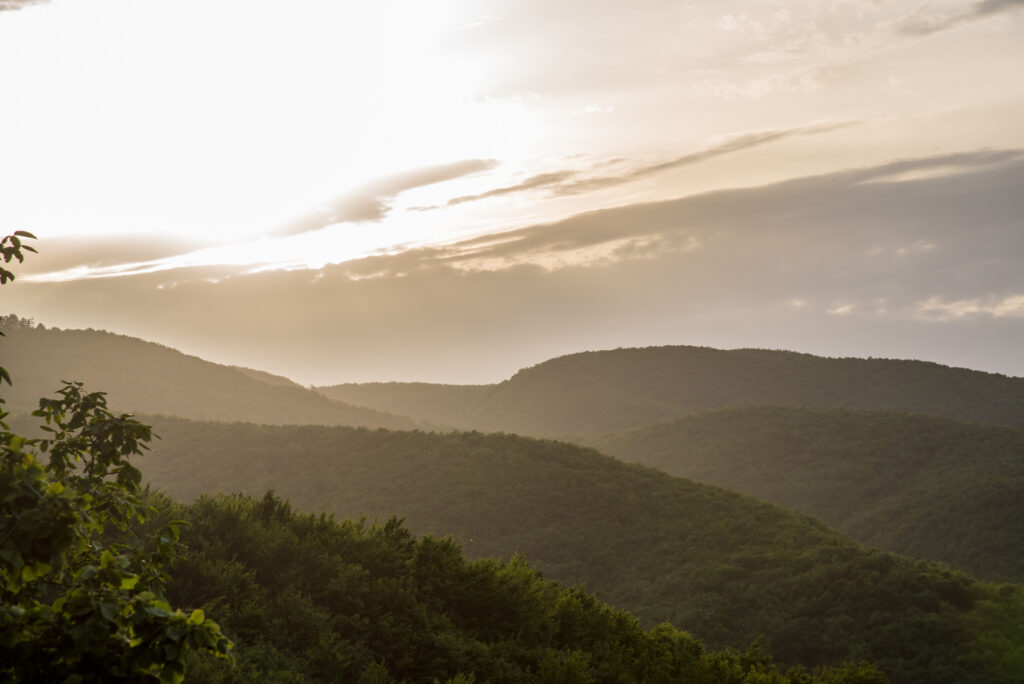 Photo: European Union
Photo: European Union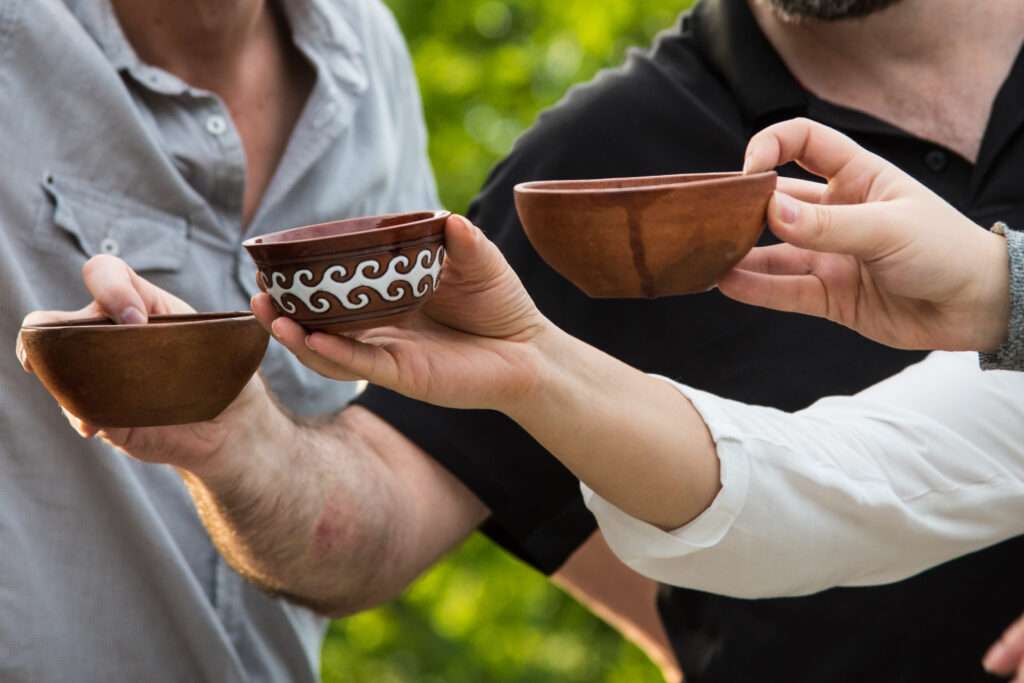 Tourism potential in South Caucasus is really high
Tourism potential in South Caucasus is really high
From the cross-border regions of Georgia and Azerbaijan, 125 young people were involved in the project. They were retrained on entrepreneur support and tourism guiding courses. As Project Manager, Madona Okropiridze, mentions, one of the main goals of the project was to support youth development in the regions and to deepen tourism-related relations between the countries:
“As a result, we managed not only to make contacts between young people and develop their theoretical skills, but also created a database to include existing tourist routes and the ones that we have developed, as well as local entrepreneurs working in the field of agro-tourism and ecotourism. This enables us to connect interested tourists with the local guides from our database, who will help them to plan the tour easily. Consequently, the project managed to make contacts between the countries. In the future, this will provide benefits not only to individuals but also to the states, as the potential actually exists.”
One of the project participants Luka Dolidze, 21, studies at the tourism department. He had three months of training in tourism. After practical tours, he now works as a tourist guide in the fields of extreme- and eco-tourism. Luka tells us that he gained important practical experience while working with the tourist groups:
“I live in Manglisi. This is one of the most beautiful places, with a variety of interesting sightseeing. That training and experience, gained through this project, was very important. Now, I can host the tourists and guide them to the amazing places of my country. On my own initiative, I turned our house into a family hotel. Acquired knowledge helps me greatly to perform better.”
Apart from studying, Luka also talks about the importance of the contact that he made through the project:
“We shared the gained experience. We travelled in the regions of Georgia and Azerbaijan. We already knew what attracts the tourist to the region. Friendly relationships were built between us and the Azeri youth – which is not limited to participation in the project, but will continue in the future. This helps both sides to offer interested people tourist tours in the neighbouring country. Just recently, I was contacted from Azerbaijan and asked to help them guide the tourist group in our region. We are also planning to organize a tour in Azerbaijan in the future. This project enabled us and young people to exchange, and share, information about each other’s cultural heritage that will eventually have a positive impact on the relations of the two countries.”
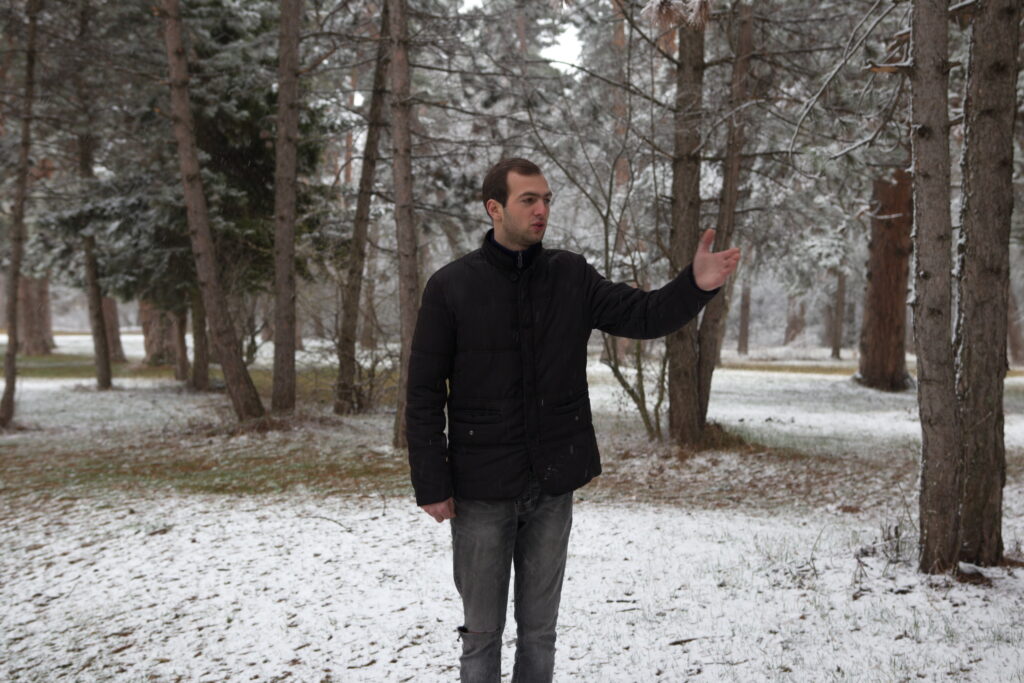 Luka Dolidze
Luka Dolidze Luka Dolidze
Luka Dolidze
Culture and traditions
Another project that has been implemented in the South Caucasus region is “Know your Neighbour”, with the aim to bring Armenian and Georgian youth closer and let them know more about each other’s countries. 24 young people were enrolled into the project on a competitive basis – 12 from Samtskhe-Javakheti, in Georgia, and 12 from Gyumri, in Armenia. The participants made 12 documentaries that described the culture, traditions and lifestyle of these two countries.
Project Manager, Marina Kupatadze, says that the project managed to introduce neighbours on each side of the border to each other, acting as a bridge or connector in the relations: “Planned activities went on very interestingly. On a daily basis, we observed how the participants were getting closer and making friends. At the beginning there was something like estrangement, a language barrier was present, but all this disappeared soon.”
“Moreover, at the beginning of the project we were planning that the participants would live with each other’s families. But they preferred to stay in the hotel, saying that it would be difficult for them to live with an unfamiliar family and environment. Later, when one-week study camp was organized in the framework of the project, they started to stay in each other’s homes.”
“Know your Neighbour” turned out to be an opportunity for young people to specifically study documentaries, filmmaking, montage, screenplay writing, directing, shooting and creating films on their own and, simultaneously, to come closer and learn more about their neighbouring countries.
 Tamara Tumanishvili
Tamara Tumanishvili Tamara Tumanishvili
Tamara Tumanishvili
“Two camps were organized – one in Borjomi, another in Gyumri – there they studied all technicalities for shooting films. Then they were divided in two groups by the following principle: two participants from Armenia and two from Georgia. Then they suggested the ideas for the films and on their own, by voting, made decisions on the topics of the final products. Eventually, 12 films were made that told us stories about the people. For example, a phaeton coachman living in Gyumri, a self-taught guide from Borjomi, about a beekeeper and about “Kukushka” – the century’s train. The participants had to exchange lots of information during the filming, and get familiar with the culture and history. In this process they discovered that both sides had similar problems, and they had a lot in common,” Marina Kupatadze tells us.
Tamara Tumanishvili is one of the participants of the “Know your Neighbour” project, who decided to participate in the project together with her friends. Tamara is 21; she is a student and studies at Samtskhe-Javakheti University, Department of Economics. She says that this was a new challenge for her: “In this project I learned a lot that was necessary for making documentaries. I believe the resulted work is very interesting. Apart from practical trainings, I learned many things about the neighbouring country and its people; this made the process especially interesting for me. At one glance In the informal environment, we had the possibility to share our goals, get familiar with each other’s’ cultures and make good friends. Despite the language barrier, we managed to communicate, sometimes by gestures; we helped each other in overcoming language barriers, in translation.”
Tamara believes that friendly relations between neighbouring countries is one of the important issues for the state, especially in the very specific regions like Samtskhe-Javakheti, where 90% of the village’s population is made up of ethnic minorities. Tamara says that there are many stereotypes in society, which cause tension and make it difficult to build relations:
“Similar projects are what’s more important, youth participation will help to break the stereotypes existing in the society and help with our communication. We started our communication with incorrect judgements about each other, coming from our society and incorrect information. After the second day in the camp, everything changed and many [started to say] ‘you see this is not as I thought it was, you see, it is so’ – and these are very important changes in our relationships. This project played a huge role in linking us”. This is how Tamara evaluates her experience from the project.
The local TV stations from both countries showed the documentaries prepared by the young participants; film demonstrations were also organised for the local population. Tamara Tumanishvili and her team also created a film. It is called “Century’s Train”.
Values
“Empowerment of Youth by Learning Real-life Values” is another project that tried to form friendships between Georgian and Azeri youth, based on correct values. As a result, 335 teachers from both countries were retrained and 385 young people took part in summer camps, participating in various cultural and sports activities.
“Participants were not only from the bordering towns, but from the villages as well. They received lots of information in this short period. During scheduled cultural and historic tours and excursions, they had the opportunity to work independently on discovering artefacts, participating in sports activities and culinary master classes. This helped them to learn about each other’s cuisine and culture. They had the opportunity to prepare meals together, and during these informal activities, we noticed how they were getting closer,” says Project Manager, Leila Suleimanova.
The young people lived in host families in Azerbaijan and Georgia. As the project manager says, this turned out to be another factor that had a positive impact on deepening the friendship. It should be mentioned, that the main idea of the project is based on UNESCO’s 13 life values: peace, tolerance, freedom, respect, love, happiness, cooperation, humility, dignity, simplicity, unity, responsibility and equality. All the activities covered the study of these values.
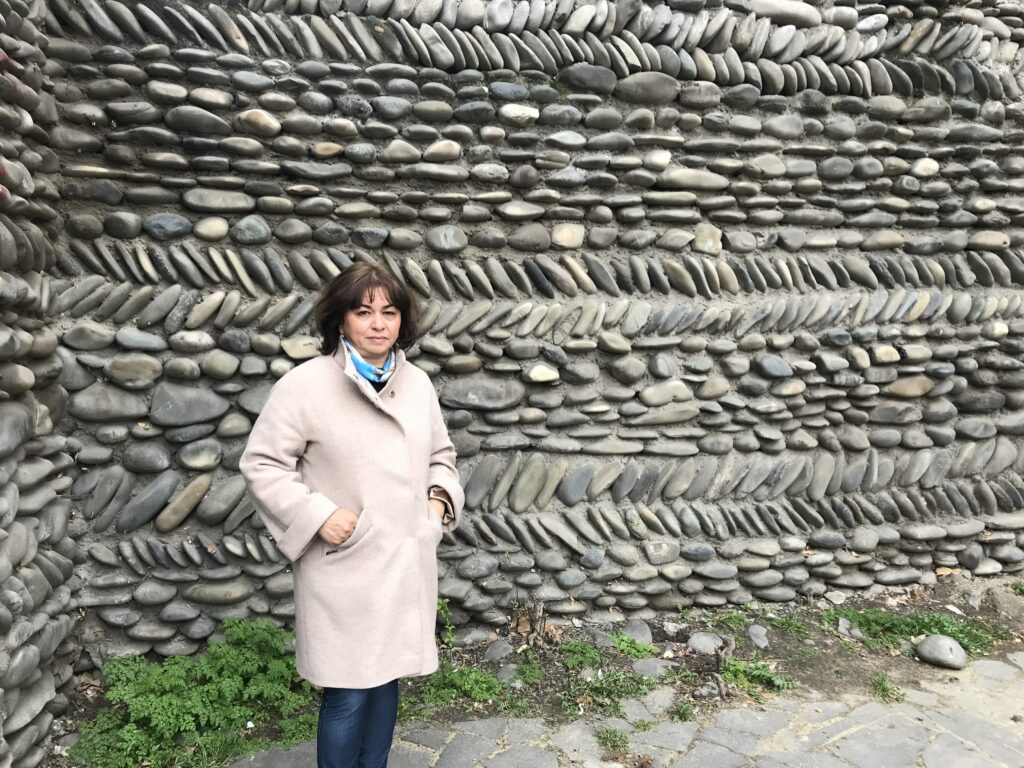 Leila Suleimanova
Leila Suleimanova Mariam Okriashvili
Mariam Okriashvili
“In the framework of the project, 20 centres were established based on the life values in 10 schools in each country of the cross-border regions. We donated to all twenty value centres photo and audio equipment to enable them to collect high quality material, upon necessity. It is important that they have relevant resources to work with. This will allow the centres to continue, and deepen relations and contacts,” says Leila Suleimanova.
Mariam Okriashvili, 21, is a student form Dmanisi. During a conversation about the project experience, she tells us that she received very important information that will help her in the future. “In parallel with many interesting activities, we had different trainings; for example we studied how to write projects. We, young people, can develop an initiative in the field of social integration and participate jointly in various projects in the future,” says Mariam.
As other participants of the project mentioned, the relations with representatives from the neighbouring country had an impact on Mariam’s views as well: “I was able to share culture, traditions, and values of my country, and get familiar with the customs and traditions of Azeri people. For this, it was very important to live in host Azeri families. The warmth and care that we received from them triggered positive emotions, and this care was very similar to Georgian hospitality. I think the strengthening of relationships starts with familiarisation of each other’s cultures and customs. We have to have opinions about each other, i.e. who are we, what unites us, what are the differences between us and develop a tolerance to these differences. Friendly relations are the tool that breaks stereotypes. Therefore, I think that we, the project participants, really managed to break the stereotypes and did this by one of the main values – friendship.”
Author: Tamar Kuratishvili
Article published by Newspress.ge in Georgian.
MOST READ
SEE ALSO
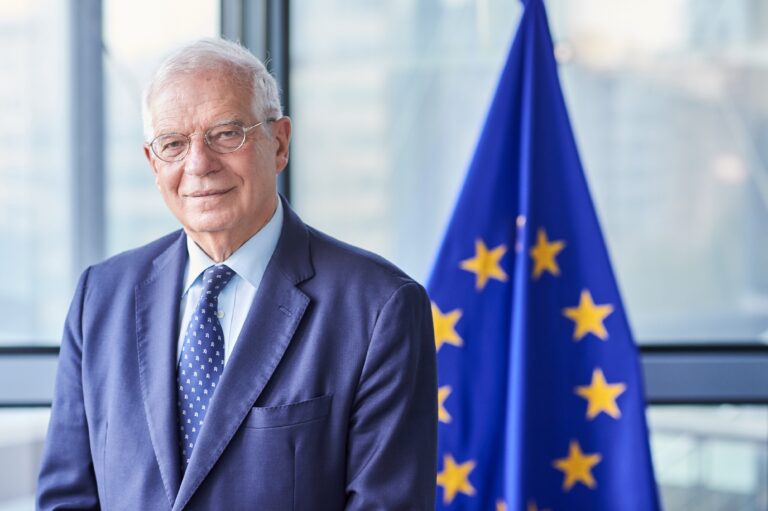
No, time is not on Russia‘s side
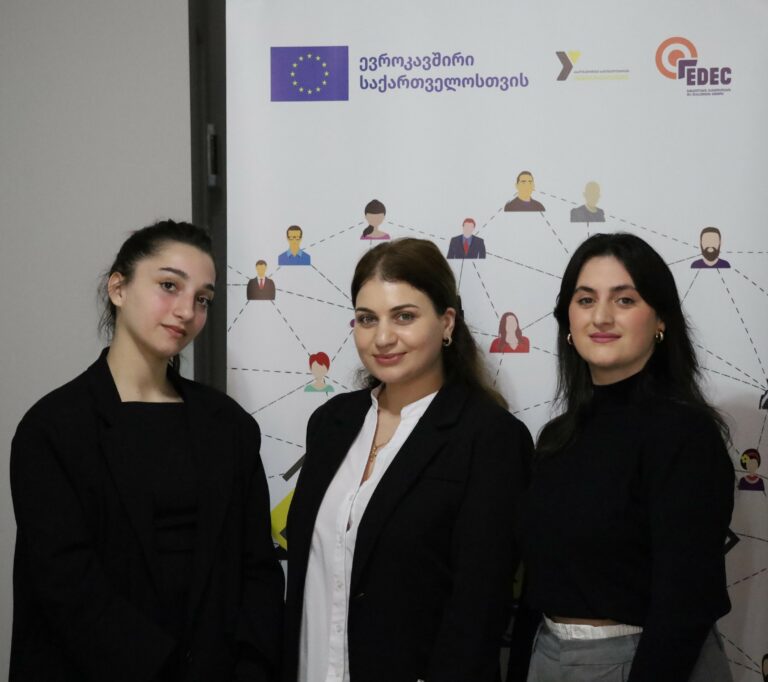
A hands-on approach to boost youth employment in Georgia
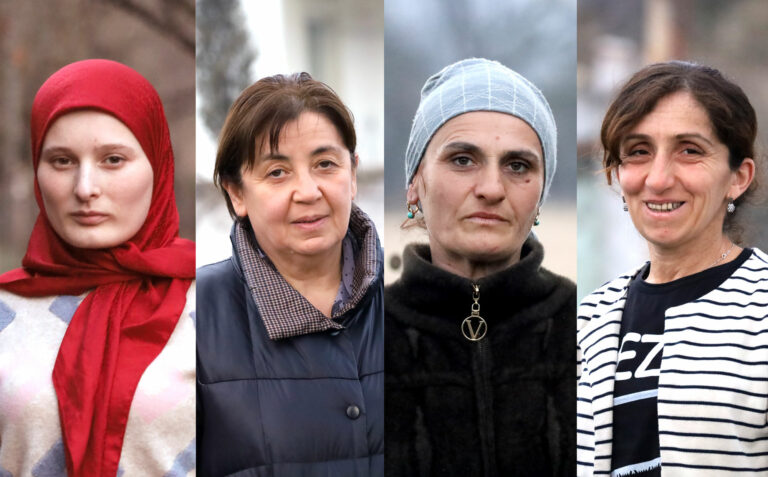
Taking health into their own hands: women’s empowerment in the remote villages of Georgia

I have no regrets: the Azerbaijani women trained to clear mines

A woman publisher in a male-dominated industry – the path to a big dream
More campaign pages:
Interested in the latest news and opportunities?
This website is managed by the EU-funded Regional Communication Programme for the Eastern Neighbourhood ('EU NEIGHBOURS east’), which complements and supports the communication of the Delegations of the European Union in the Eastern partner countries, and works under the guidance of the European Commission’s Directorate-General for Neighbourhood Policy and Enlargement Negotiations, and the European External Action Service. EU NEIGHBOURS east is implemented by a GOPA PACE-led consortium. It is part of the larger Neighbourhood Communication Programme (2020-2024) for the EU's Eastern and Southern Neighbourhood, which also includes 'EU NEIGHBOURS south’ project that runs the EU Neighbours portal.

The information on this site is subject to a Disclaimer and Protection of personal data. © European Union,







